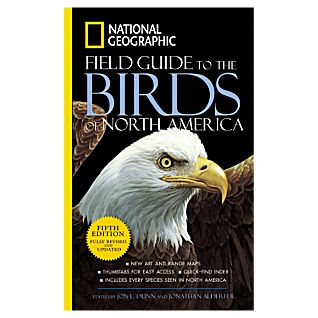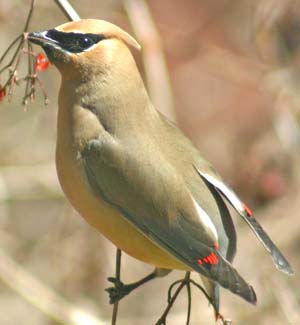
Milnesand, NM. LPC Festival 2010
At the beginning of the semester, Dr. Susan Tomlinson asked us if we knew the definition of a prairie. None of us had seen one before, and thus we all answered with broad descriptions of what we thought the prairie should be. It was evident that none of us had much interest in the prairies due to the fact that our statements described them as arid, dull, and lifeless stretches of lands. She then asked us what our favorite ecosystem was, and many described luscious and green forests, beaches, and areas far away from the depictions of the prairie we have given earlier. She wanted to know our opinion on what we thought of the prairie, and why did we not prefer it over the greener areas we have described earlier. My idea consisted of the fact that we were not educated on what the prairie is and its importance to our daily lives. However, Dr. Tomlinson made the claim that even individuals educated about it sometimes manage to not care at all for it. This question intrigued me a lot throughout the semester, and it kept popping out in my mind through our fieldtrips, service projects, and outside lectures. Just how can one point out the importance of this ecosystem that is eventually dying off due to human causes. Surely, people of the area donate so much money to save polar bears thousands of miles away, but do not imagine that the habitat that surrounds them is yearning for help. It is a question that I tried to answer, and hopefully have gathered several conclusions now at the end of my journey.
My expectations of this class were far different from what it turned out to be. I had entered the class believing that it would consist of simple lessons in drawing birds and flowers. The idea of keeping a naturalist’s journal scared me a little, since I really did not have a clue of what to put on the journal. I was far more relieved when I was allowed a sense of creativity on the things that I posted in this blog and on my more traditional journal from which I gather the information in the field. Nature is one of my passions and I was willing to undertake this class in order to learn how to preserve those memories. As I might have pointed out, the two major components of this class is the identification of local birds and wildflowers. I must admit that this has been one of the most challenging aspects of the course, since at first one knows nothing about what features in a bird make it recognizable as a species. However, patience and practice soon paid off, and identifying these creatures soon became easier than what many of us first thought.

Example of one of my drawings. These are pigeons that I looked at by the English Building at Texas Tech University.

My LPC Festival Drawings. I drew the territories I observed on the lek, and describe the face offs between the male LPC.
In order to test what I have learned I decided to give myself the assignment to go out to the field and identify a good amount of bird and flower species. So, Saturday after my physics final I grabbed my birding and wildflower field guides, journal, art kit, and binoculars and I decided to head over to Lubbock Lake Landmark and have my very own field day. I had been a little disappointed at the fact that we did not have enough time to experience the flowers of the region, but to my surprise the fields at the Landmark were covered in flowers! The weather was slight cold, low 50s, with a cloudy sky. It was slightly windy at about 20 mph from the south east. There was a game going on at the Lubbock athletic complex, and I was sure that the noise would scare most of the birds away. To my surprise, one of the species I had the opportunity to encounter was not really shy! Also, I found out that I could not only take pictures but see the file names of the photographs on my camera. New tip, as you write down the details of your encounters, you can also write the file name so that you can go back later and see the photograph if you need help identifying! So, I will provide a report below of my findings. I took the pictures of the flowers myself, and those of the birds I got from the internet:

The first flower I found is one that we had seen at Milnesand the weekend of the LPC Festival. It is a compositae called
chocolate daisy. This has become one of my favorite flowers. The reason is what helped me identify it from about 20 feet away. As the wind blew in my direction I could smell the richness of chocolate. The slight yellow spikes growing form the disks flower area were noticeable also. As you can see, it is a compositae due to its yellow ray flowers growing form a center with brown/yellow disk flowers. These mostly grew along the trail.

The
purple foxglove belongs to the snapdragon family. Its leaves and stems are smooth and thick. They have many tiny hairs growing along that give the plant its gray color. The flowers grow along a stem. Leaves grow in opposite direction from each other. Beautiful small purple flowers that are almost easy to miss.

Next I spotted a beautiful bird. A first I thought it was a meadowlark species, so I simply wrote it down on my bird day list and kept walking. Later, when I kept looking for a strange call, I noticed that it came form this bird. It has a grayish head, black tail, and a bright yellow belly. There is a slight olive, dark gray pattern to the wings. I looked through out the field guide (concentrating in the flycatcher family due to the sharp shape of its beak, its large head, and eyes) and I discovered that this bird was a
Western King Bird. My first summer resident bird! This was enough to inspire me to look for more!

I continued to walk down the trail, further away from the cheering crowd, when I encountered another snapdragon flower. This was a
beard tongue. It had tiny and rough hairs to the surface of the leaves which are lance shaped. White pale lavender flowers shapped like narrow funnels at the base. It is little less attractive than the purple foxglove but with similar characteristics.

The next flower I encountered close to the beard tongue is one that I could not place in this area. It looked more like a decorative plant one could buy at the local flower shop than the typical wildflower. It is short and bouquet like. It has branched stems with leaves covered with tiny rough hairs. There are 2-3 toothed shapes per ray flowers with yellow disk centers. This was the
blackfoot daisy. 
Next I saw another bird. These were really far away, but the field marks were evident of its species. They were tiny and sparrow like. Their bodies were completely black with a thick white stripe on their wing. They were in packs, and enjoying the company of the Western King Bird. Every now and then they would all fly together. To my surprise they were gathered near the prairie dogs (who by the way have several colonies in this part of the LLL!). In my opinion, based on their spring range and field marks I decided they must have been
Lark Bunting.
Seeing another bird on a day when I doubted the possibilities really let me know how good I had been getting at this over the semester! Way to go! I decided to head back since I had been out for an hour already. However on my way back…

The
pink evening primrose was easy to identify since I had met its cousin the evening primrose on class before. Indeed its picture demonstrated the characteristic solitary flowers with light pink veins to petals. The field guide mentioned that for this area of Texas they rarely show the pinkness in the veins. As evident in the picture there is no pink color, however the other white primrose leaf shape and petal number really did not match the one I have found.

The
tansy aster, another beautiful organism that seemed very familiar. It grows form a bushy plant with fern like alternating leaves. The flower grows at the head of the tips of its branches. There are 15-25 ray flowers that are violet with a bright yellow disk flower center.

One family of species that I wished to encounter was a legume. At first I confused this flower with its cousin the feather dalea. I had seen it in the past, and both resemble a small shrub. However, this one had soft pink flowers in dense ball-shaped clusters. It possessed small thorns. It is the
pink mimosa, who is also known as the cat claw.

The
pains zinna. Another small pretty flower and plant. It is low growing with many woody branches. It resembles a small shrub. Leaves are opposite, linear, and narrow. There are 3-4 ray flowers per flower, which are untoothed and broad. The small disk flowers grow in the middle, and are also yellow.

This is a flower that I see every day growing along the trail I take to school. I had wanted to identify it for a while, but the stress of finals prevented me from researching it until today. The leaves of this plant grow on the lower portion of it. It has a large flower that grows tall above the base of the plant. The ray flowers are yellow, shaped into a 3 lobbed cleft. The disk flowers are red and multiple. The flower is called the
yellow gaillarda.

The guys and me, we went tree planting this day at LLL. Photo by Eileen Dee.
The result of my field day… a success! I am please with the finding and more than ever that I would be able to apply my skills in any habitat!
So, what exactly have I learned? Did I answer the question Dr. Tomlinson asked at the beginning of the semester? While I do not consider myself a Llanero, I do have developed an interest for this habitat. It is not until one experiences an intimate relationship with a place that a feeling of responsibility blooms within. I planted native trees in the area, enjoyed the flora and fauna, and even hated it now and then. Still, whether I like how it looks or not, I do care for the prairie. I care that more than 90% of prairies are gone. I care because the prairie is my current home. I care because I have come to develop an interest for the animals and plants that live here. I care because, through my moments alone in this place, I found peace, life, and more important value. The services that the ecology of the prairie provided for me, both in this class and in my stay in Lubbock, have much value. This is what makes me care about this place. I still love the desert, my true home, but the prairie will always be where I encountered nature for the first time. It will always be the first entry in this blog, the first chapter of a life time filled of an appreciation for nature.

What lies ahead? I'm excited to find out!

















































